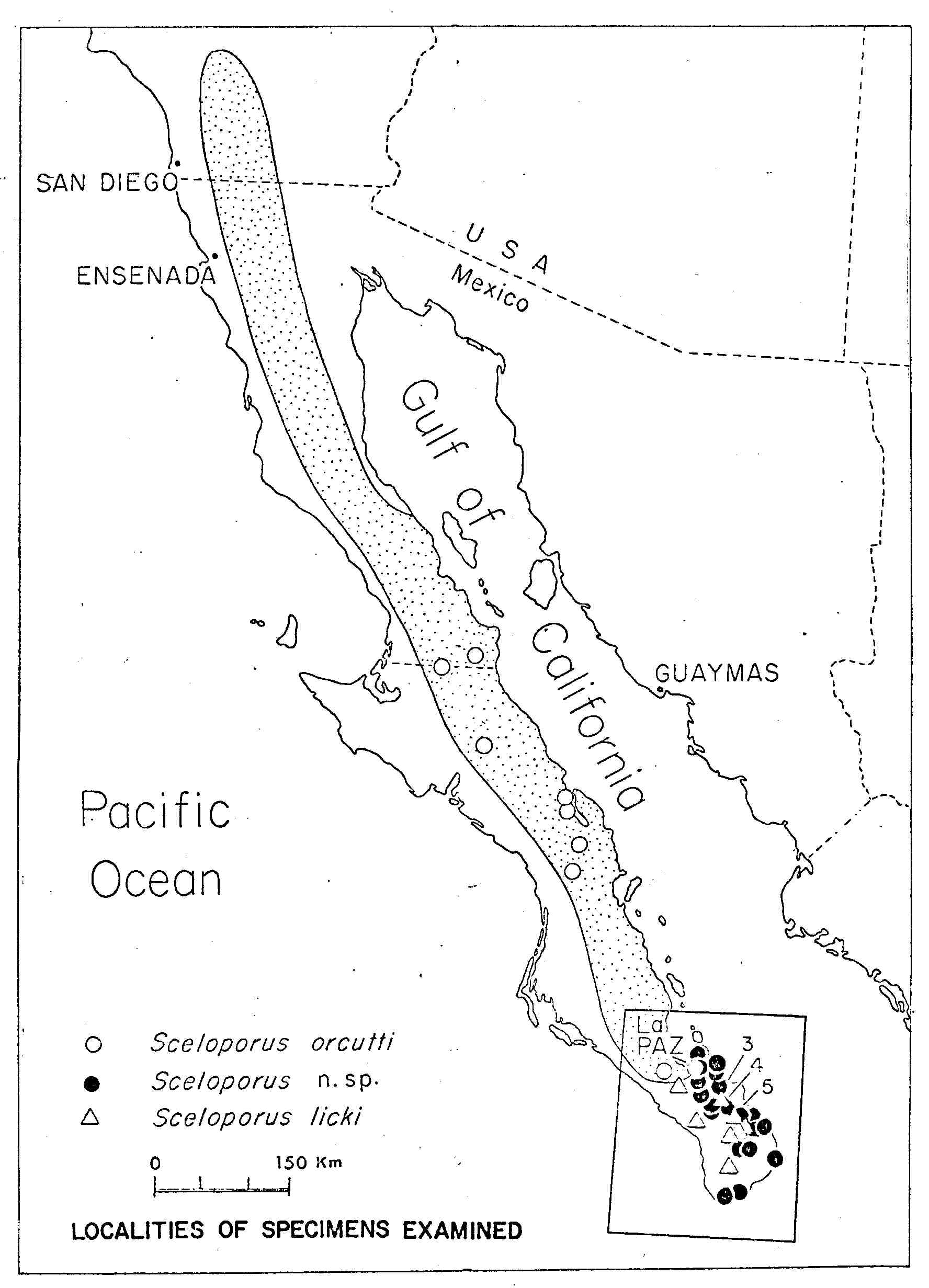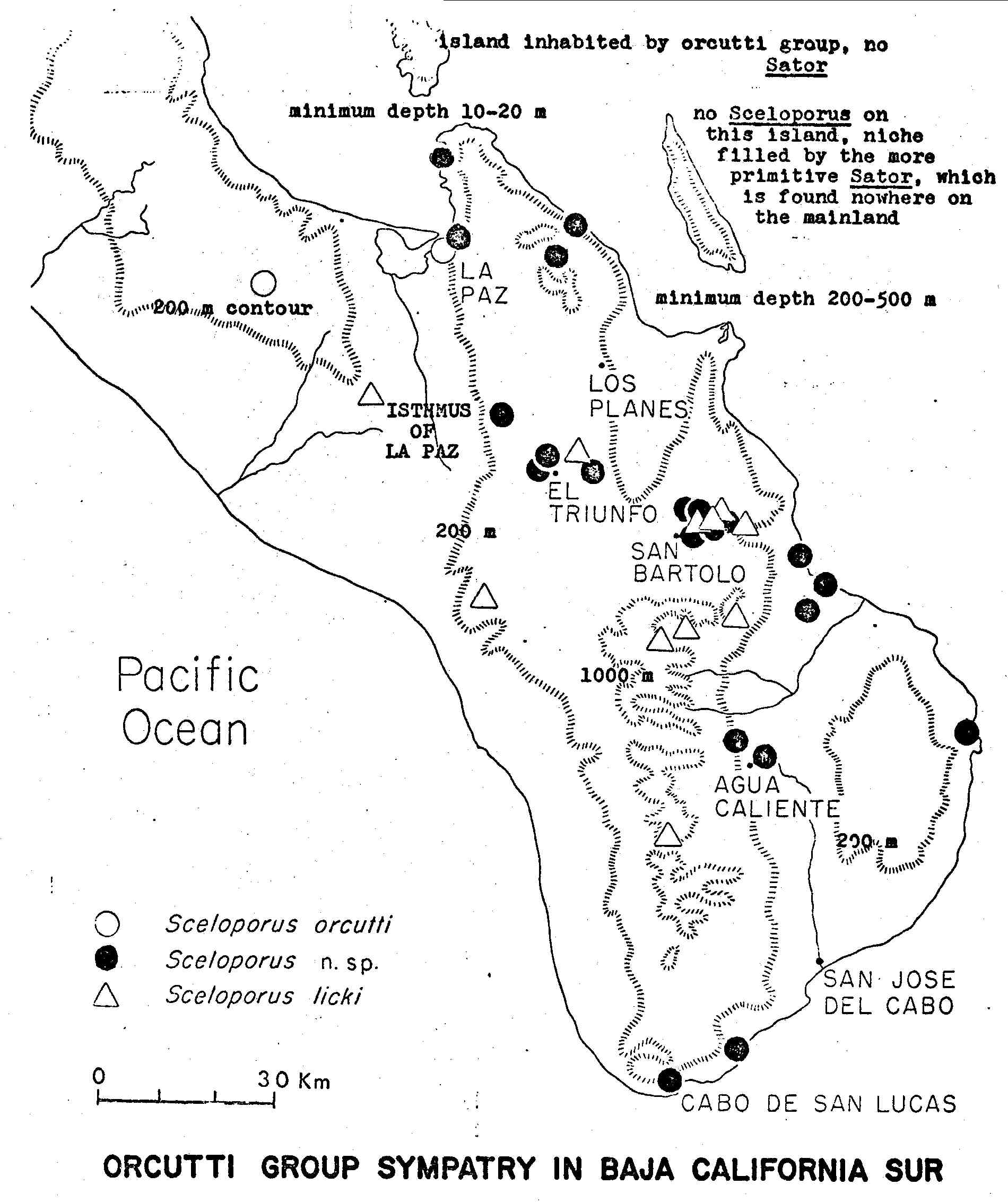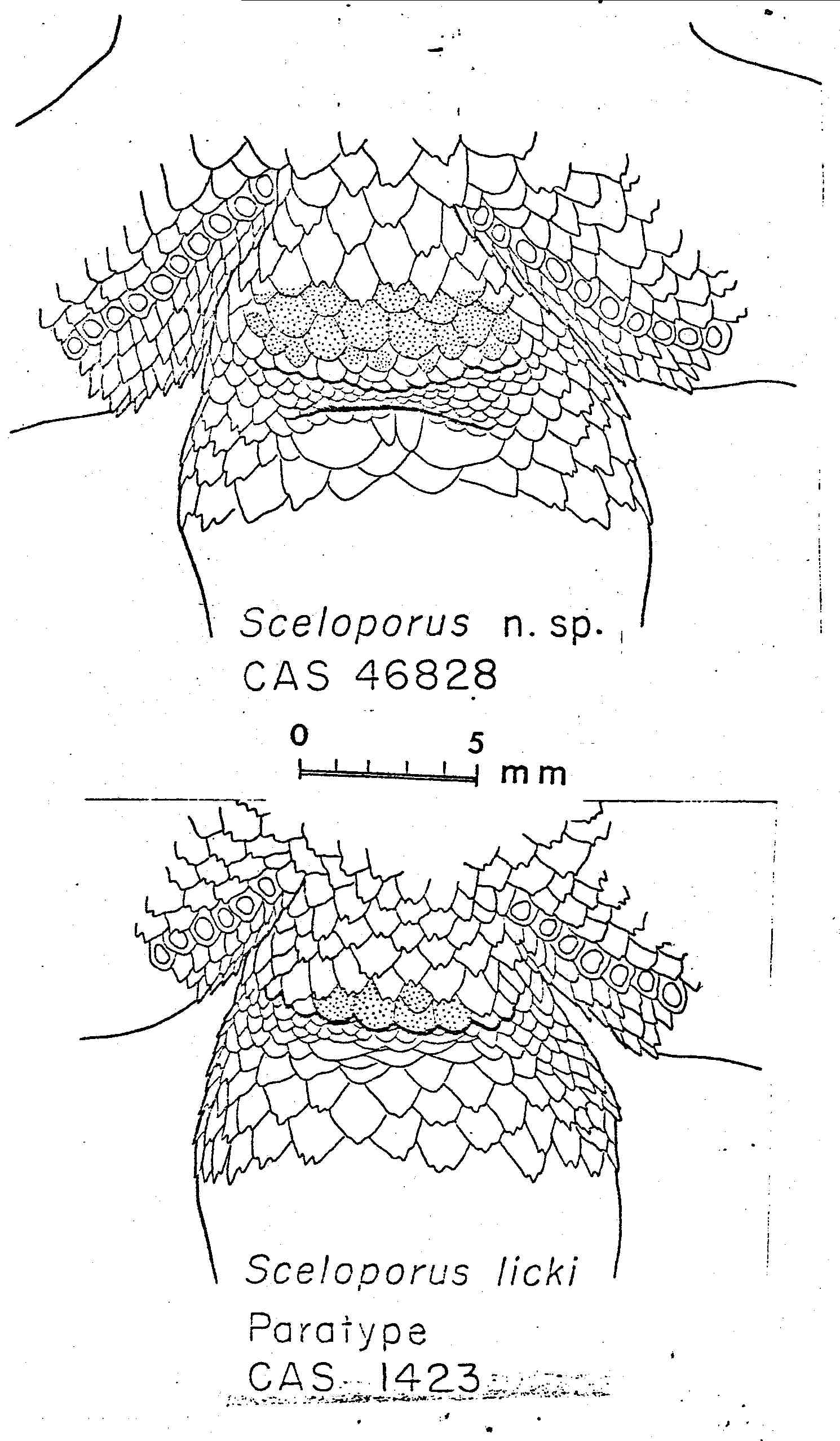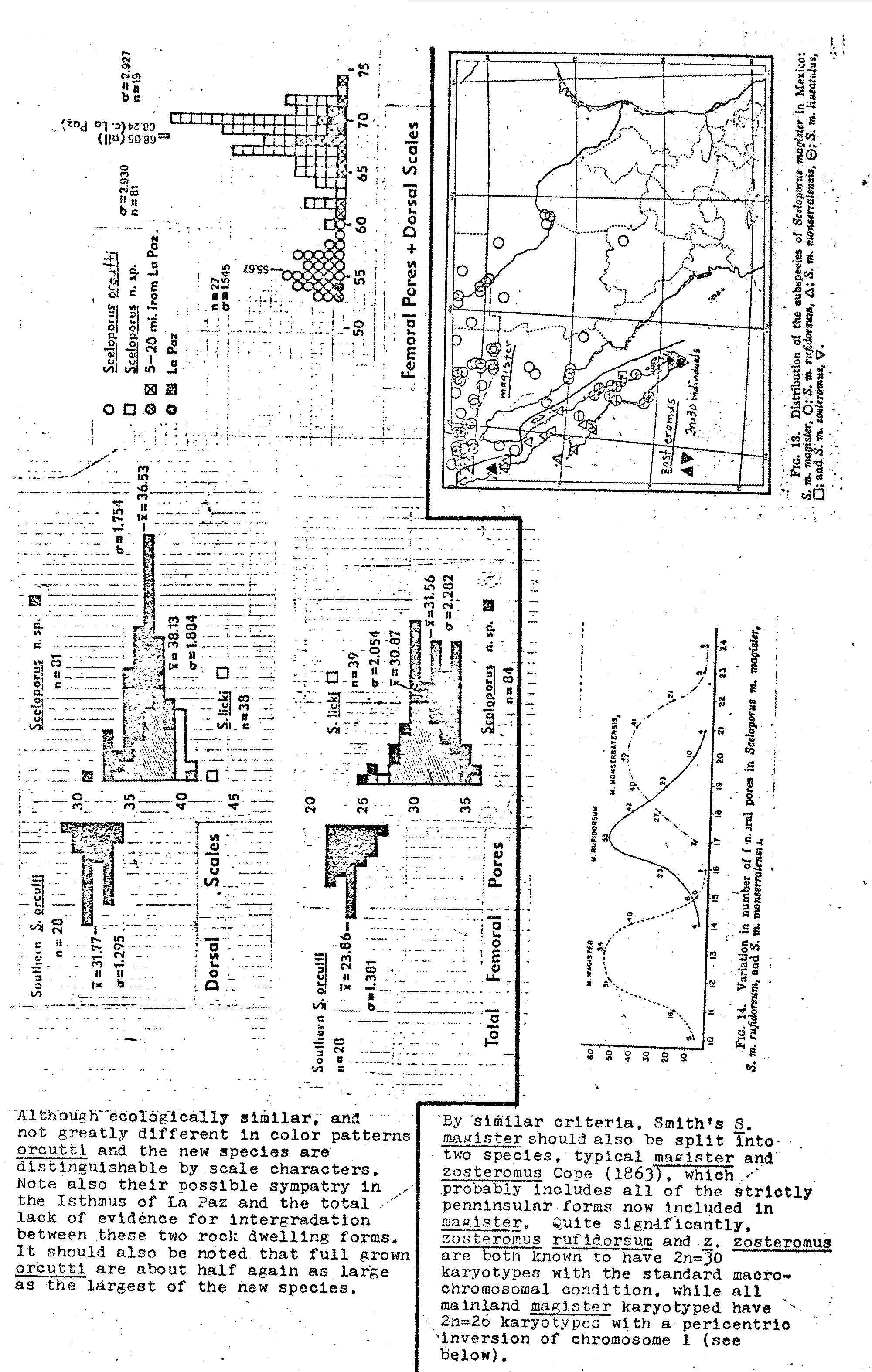
My extensive collecting for the karyological study has revealed several taxonomic problems of considerable importance for the understanding of phylogenetic relationships among the species of the large-sized, large-scaled Sceloporus. The most important problems involve Baja California populations now included in S. orcutti and S. magister. Sceloporus orcutti, as reviewed by Smith (1939), has been found to include three clearly distinct biological species: typical orcutti, licki Van Denburgh (1895), and an undescribed form included by Smith in orcutti licki. Although virtually identical in all standard characters of scalation, head proportions, and size; licki and the new species are quite different In ecology; licki is mainly a tree dweller In the relictual oak and oak-pine woodland communities, while the new species Is a rock dweller much like typical orcutti, and generally Is found in the thorn forest and thorn scrub communities. The two forms are sympatric mainly where the oak community penetrates the thorn scrub along watercourses and in deep canyons. The two species also differ strikingly in color patterns which are probably important In species recognition and/or intraspecific socal behavior. Also, one scale character is useful for the discrimination of adult males.
[Note, these findings were presented in Hall 1969, and presented formally in the paper, Hall, W.P. and H.M. Smith. 1979. Lizards of the Sceloporus orcutti complex of the Cape Region of Baja California. Breviora, Museum of Comparative Zoology, 452:1- 26.]



